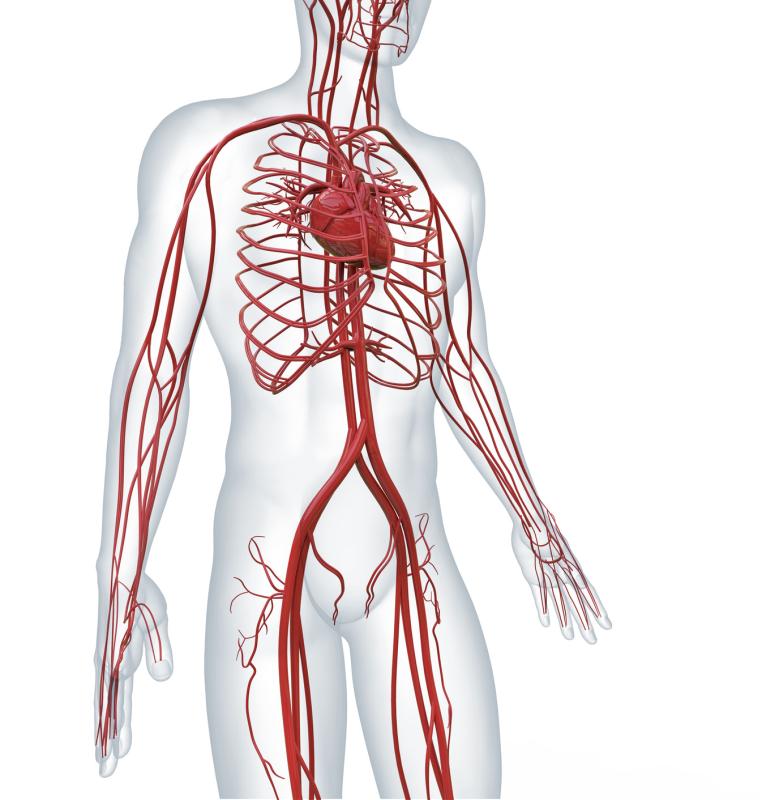চোখ খুলে ওপাশ কাত হয়ে মুঠোফোনটি হাতে নিয়ে পাওয়ার বাটন অন করার সাথে সাথে এক লাফ দিয়ে খাট থেকে নেমে যায় রাতুল। ফোন হাতে নিয়ে সে দেখে ঘড়িতে সময় তখন ৮ টা বেজে ৩৫ মিনিট। নিজেকে মিথ্যা প্রমাণ করতে গিয়ে রুমের দেয়াল ঘড়ির দিকে তাকিয়ে দেখলো। ঠিকই তো! ঘড়ির বড় কাটা ৭ এ আর ছোট কাটা ৮ এর ঘরে। তার মানে স্পষ্ট যে আজকের ক্লাস টা সে মিস করে ফেলল। যাক, তারপরও তাড়াতাড়ি রেডি হয়ে একটু ওয়ার্ড এর দিক টা ঘুরে আসবে বলে চিন্তা করলো, ক্লিনিকাল সাইড এ আবার ওর খুব ইন্টারেস্ট ।
রাতুল এমবিবিএস প্রথম বর্ষের ছাত্র। তার ওয়ার্ডে ওয়ার্ডে ঘুরতে বেশ ভালই লাগে। সবসময় ইন্টার্ন আপুদের পিছে পিছে ঘুরে আর এটা ওটা জিজ্ঞেস করতে থাকে। আজও এর ব্যতিক্রম কিছু ঘটে নি। মেডিসিন ওয়ার্ড এ ভর্তি পেশেন্ট এর পাশে বসে এক ইন্টার্ন আপু কি জানি লিখছে। রাতুলকে আসতে দেখে আপু বলে উঠল, কিরে তুই আজ ও চলে এলি, ক্লাস করিস নি? নিশ্চয় ঘুম থেকে উঠতে দেরি করে ফেলেছিস। আচ্ছা এসেছিস যখন বস আমার পাশে। এই সুযোগ তো আর রাতুল হাত ছাড়া করবে না। তারপর আর কি! শুরু হয়ে গেল রাতুল এর প্রশ্নের ঝড়।
রাতুল: আপু, পেশেন্ট এর পা টা ফুলে গিয়েছে না? এটা কে কী বলে?
ইন্টার্ন আপু: হ্যাঁ, ঠিক ধরেছিস। একে Edema বলে।
রাতুল: একটু বুঝিয়ে বলেন না।
ইন্টার্ন আপু: Edema মানে সহজ ভাষায় swelling।Accumulation of fluid in the interstitial space is called edema. যদি Capillary তে hydrostatic pressure বেড়ে যায়, Plasma osmotic pressure কমে যায়, আর lymphatic obstruction হলে অর্থাৎ Microcirculation যদি block হয়ে যায় তখন গিয়ে Edema develop করে।
রাতুলঃ হিবিজিবি লাগছে বিষয়টা। Microcirculation কি? একটু detail এ বুঝিয়ে বলেন না।
ইন্টার্ন আপুঃ তা তো একটু লাগবে। তোর আগে Microcirculation বুঝতে হবে।
রাতুলঃ তাহলে বুঝানো শুরু করেন।
ইন্টার্ন আপুঃ হুমম।
Microcirculation is the flow of blood or lymph through the smallest vessels of the body, as the venules, capillaries, and arterioles.
রাতুলঃ এর Function কী?
ইন্টার্ন আপুঃ Transport of nutrients from the capillary to the tissue and removal of cell excreta. Microcirculation এর কিছু component আছে সেগুলো হলো-
🔸Arterioles.
🔸Meta-arterioles.
🔸Precapillary sphincter.
🔸Capillaries.
🔸Venules.
🔸Terminal lymphatic capillaries.
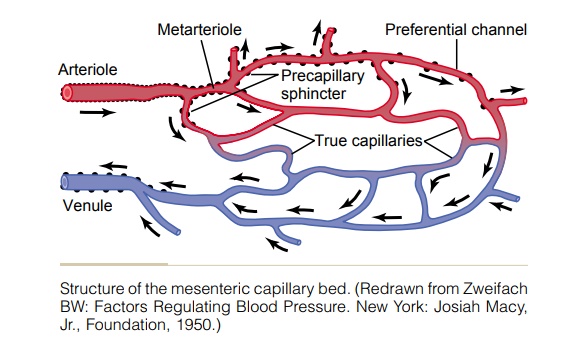
প্রধানত capillary তে fluid exchange হয়। From arterial end of capillary, fluid comes out to provide nutrient to cell and again goes back to the venous end of capillary. এই সময় কিছু Fluid specially Protien leak হয় যা আবার capillary তে ফিরে যেতে পারে না, তখন এরা Lymphatics এর মাধ্যমে thoracic duct হয়ে heart এ drain করে।
রাতুলঃ Precapillary sphincter কী? আর Capillary বিষয়টা নিয়ে কিছু বলেন আপু। আমাদের body তে capillary সংখ্যা কত হবে?
ইন্টার্ন আপুঃ প্রথমত কোন Nutrient artery 6 to 8 times divide হয়ে arterioles তৈরি হয়। Arterioles আবার 2 to 5 times divide হয়ে meta- arteriol then capillary form করে।
Artery ➡️Arteriols ➡️ Meta- arterioles➡️ Capillary
এই Capillary যেখানে smooth muscle fiber দিয়ে encircle হয়, তখন একে Precapillary sphincter বলে।
আমাদের body তে 10 billion capillaries থাকে। সব capillary কে একত্রে করি যদি একটা surface area পরিমাপ করি তবে তা (500-700) square meter পর্যন্ত হতে পারে। তার মানে আমাদের body তে এতো বেশি capillary থাকে যে প্রত্যেক cell থেকে capillary এর দূরত্ব প্রায় (20-30)micrometer।
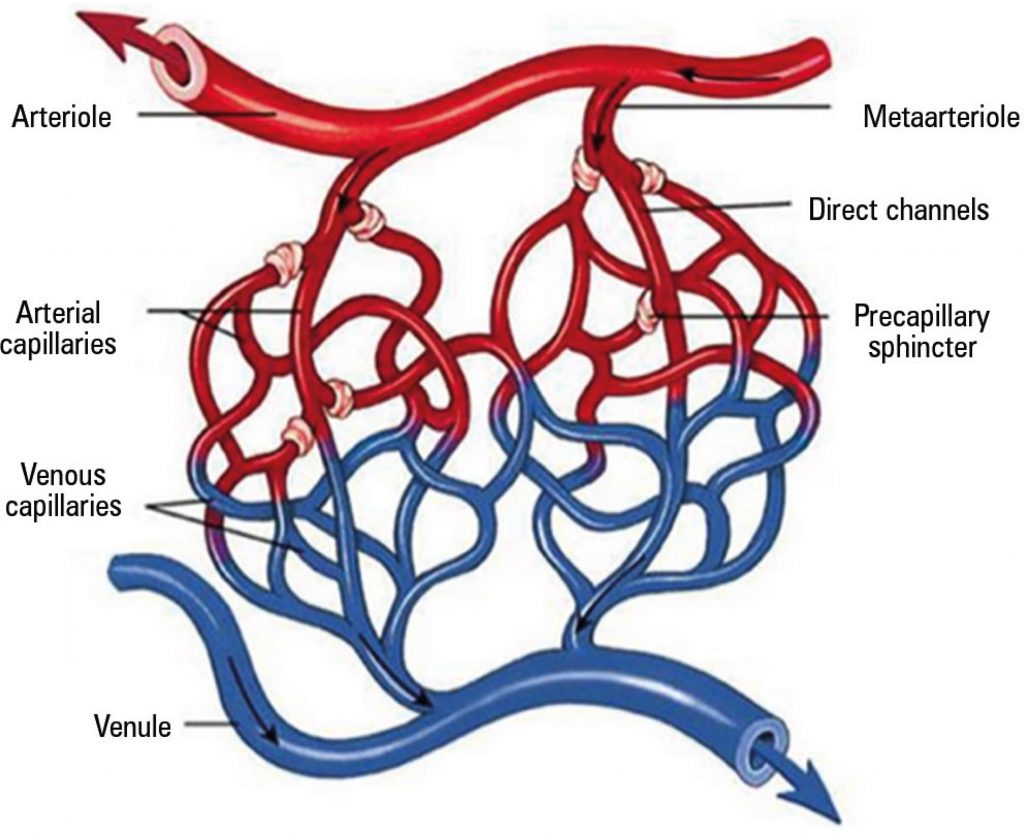
রাতুলঃ Capillary এর structure কেমন?
ইন্টার্ন আপুঃ Capillary wall গুলো highly permeable single layer endothelial cell নিয়ে গঠিত হয়। এর চারপাশে ঘিরে থাকে basement membrane। Capillary wall এর total thickness হল 0.5 micrometer, internal diameter হল 4 to 9 micrometer। তাই fluid exchange easily এবং rapidly হয়।
Special types of Pores are found in the capillaries of certain organ.
• In the brain, the junction between the capillary endothelial cell are mainly tight juntion & it is known as continuous capillary. Only small molecules such as water, O2 and CO2 can pass into and out of the brain tissues.
• In the liver, the clefts between the capillary endothelial cell are widely open. It is known as sinusoidal capillary. Through this, almost all dissolved substance like plasma protien can pass into the liver tissue.
• In the glomerular capillaries in kidney, numerous small oval windows called Fenestrae penetrate all the way through the middle of the endothelial cells so that tremendous amount of very small molecular and ionic substance can filter through glomeruli.
রাতুলঃ তার মানে ৩ ধরনের capillary সম্পর্কে বলেছেন-
• Continuous capillary
• Sinusoidal capillary
• Fenestrated capillary
ইন্টার্ন আপুঃ হুমম। এবার vasomotion নিয়ে বলি, শোন-
“Flow of blood in the capillaries is called as vasomotion”.
Regulation of vasomotion:
It is regulated by opening and closing of precapillary sphincter & the opening and closing of this sphincter depends on the concentration of O2.
If O2 conc. decrease in tissue ➡️ Precapillary sphincter will be opened fulfill O2 demand of the cell.
O2 conc. excess হলে কী হবে বলতে পারবি রাতুল?
রাতুলঃ হ্যাঁ পারব।
If O2 conc. excess in tissue➡️ Precapillary sphincter will be closed.
আচ্ছা আপু, Hydrostatic pressure বলেছিলে না তখন এর কাজ কী?
ইন্টার্ন আপুঃ ” Hydrostatic pressure is the pressure which exert by fluid at rest with respect to adjacent bodies” & ” Colloid osmotic pressure is a pressure which exert within the cardiovascular system by protiens found in blood plasma”.
The hydrostatic pressure in the capillaries tends to force fluid and its dissolved substances through the capillary pores into the interstitial spaces. Conversely, osmotic pressure caused by the plasma proteins(called colloid osmotic pressure) tends to cause fluid movement by osmosis from the interstitial spaces into the blood.
Capillary তে যে fluid filtration হয় তা hydrostatic pressure আর coloidal osmotic pressure দ্বারা determine করা হয়।
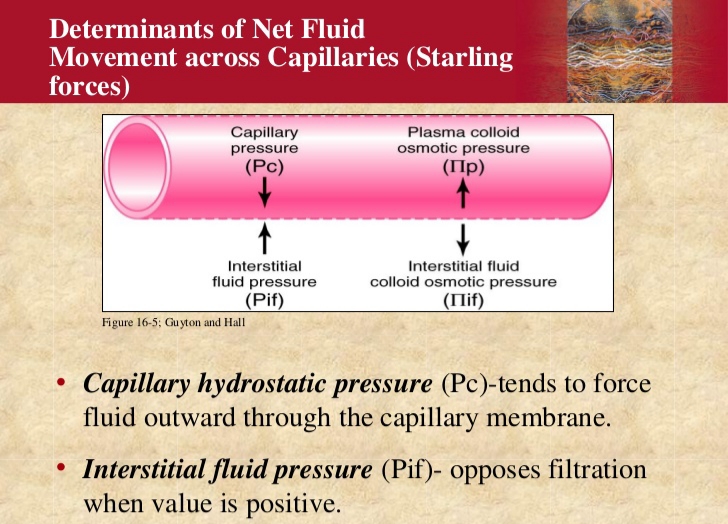
The four primary forces that determine whether fluid will move out
of the blood into the interstitial fluid or in the opposite direction. These forces are called “Starling forces”.
Starling forces are-
- The capillary pressure(Pc) , which tends to force fluid outward through the capillary membrane.
- The interstitial fluid pressure(Pif) , which tends to force fluid inward through the capillary membrane when Pif is positive but outward when Pif is negative.
- The capillary plasma colloid osmotic pressure(Pp) , which tends to cause osmosis of fluid inward through the capillary membrane.
- The interstitial fluid colloid osmotic pressure (Pif) , which tends to cause osmosis of fluid outward through the capillary membrane.
সব forces কে একত্রে আমরা Net filtration pressure বলি।
NFP= Pc- Pif- πp+ πif
যদি NFP positive হয় তবে capillary গুলো তে net fluid filtration হবে আর যদি negative হয় তাহলে net fluid absorption হবে interstitial space থেকে capillary এর দিকে।
Fluid filtration rate প্রতিটি capillary এর size, pores & number of capillary এর উপর ও depend করে। এই সকল factor কে একত্রে capillary filtration coefficient(Kf) বলে।
রাতুলঃ Fluid capillary membrane দিয়ে exchange কীভাবে হয়?
ইন্টার্ন আপুঃ Arterial end এর average capillary pressure 15 to 25 mm Hg যা venous end থেকে বেশি। এই difference এর জন্য Fluid filter হয় arterial end এ আর reabosorb হয় venous end এ।
Filtration at the arterial end of the capillary
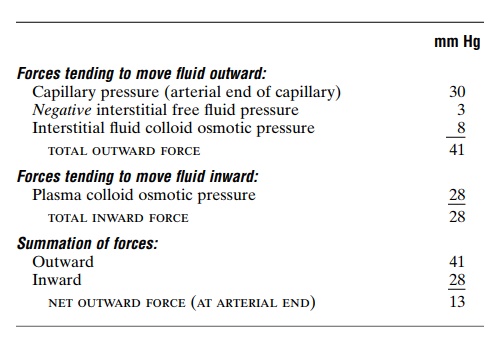
Thus the summation of forces at the arterial end ofthe capillary shows a net filtration pressureof 13 mmHg, tending to move fluid outward through the capillary pores.
Reabsorbtion at the venous end of the capillary:

Thus, the force that causes fluid to move into the capillary, 28 mm Hg, is greater than that opposing reabsorption, 21 mm Hg. The difference, 7 mm Hg, is the net reabsorption pressure at the venous ends of the capillaries.
১০ ভাগের ৯ ভাগ fluid arterial end থেকে filtered হয়ে venous end দিয়ে reabsorbed হয়ে যায়। বাকী ১ ভাগ lymph vessel দিয়ে গিয়ে circulating blood এ চলে যায়।
Starling equilibrium নামক একটা ব্যাপার আছে।
রাতুলঃ আবার এটা কী?
ইন্টার্ন আপুঃ বলছি।
যে পরিমাণ Fluid arterial end থেকে filtered হয় প্রায় একই পরিমাণ fluid venous end দিয়ে reabsorb হয়ে যায়।
যে অল্প পরিমাণ Filtered fluid reabsorb হতে পারে না আমরা জানি তা Lymphatics এর মাধ্যমে আবার circulation এ ফিরে যায়।এই excess filtration কে Net filtration বলে। নিচে chart টা একটু দেখ-
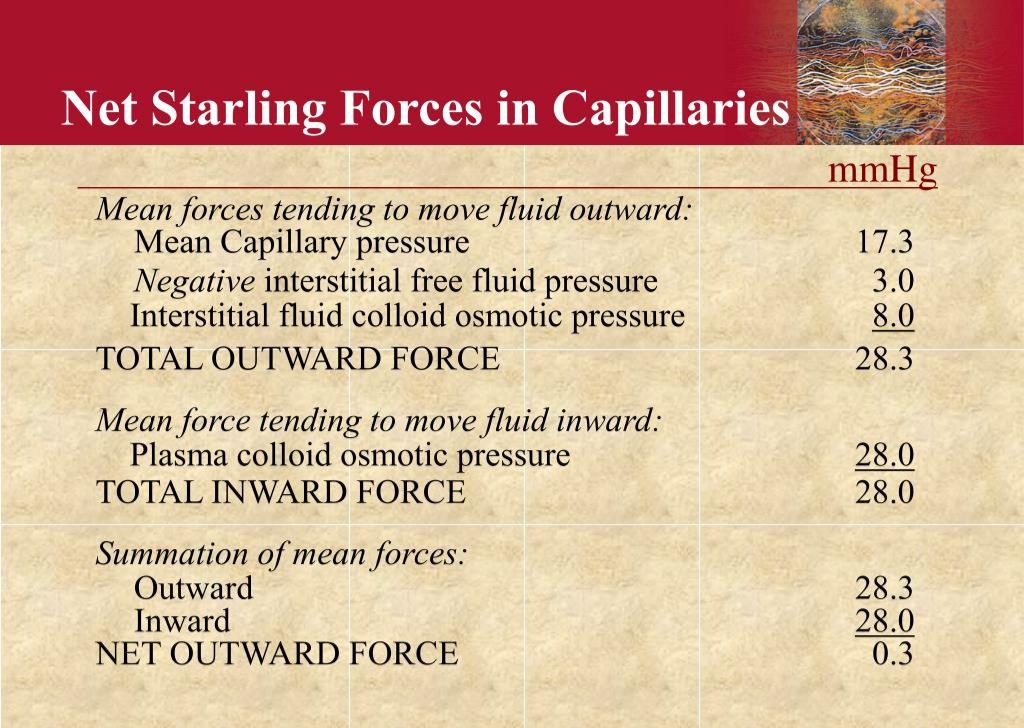
এই chart অনুযায়ী net filtration only 0.3 mm Hg। That means slightly more filtration of fluid into the interstitial spaces than reabsorption. The normal rate of net filtration in the entire body is only about 2 milliliters per minute.
এখন কী Microcirculation কিছু টা বুঝতে পেরেছিস?
রাতুলঃ জি আপু। সাথে Edema কেন হয় তা ও বুঝেছি এখন।
ইন্টার্ন আপুঃ Good. তোর আর ক্লাস নাই? ক্লাস এ যাবি না? বড্ড ফাঁকিবাজ তুই!
রাতুলঃ না আপু। যাবই তো এখন। Ward এ ঘুরতে বেশ ভাল লাগে।
ইন্টার্ন আপুঃ এখন ভালো লাগবে , যখন Ward এ ঘুরার সময় আসবে তখন আর ভালো লাগবে না। যা এখন ক্লাসে। আল্লাহ হাফেজ।
রাতুলঃ আল্লাহ্ হাফেজ আপু।
Reference:
◼ John E. hall, Michael E. hall: Guyton & hall textbook of medical physiology, 11th edition.
Saima Akther
Medical College For Women & Hospital
Session: (2016-17)

